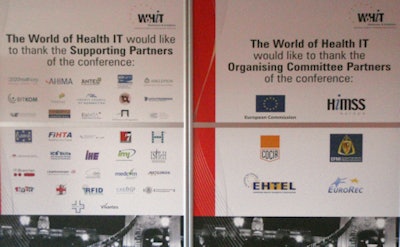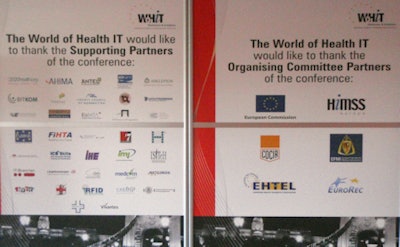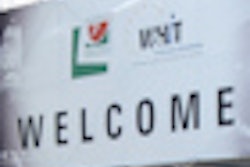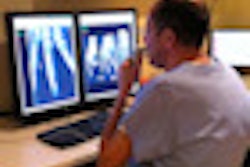
BUDAPEST - Cloud computing -- which involves running application software and storing related data in central computer systems, while providing users with access to them through the Internet -- may effectively speed up the development of e-health and help countries with infrastructure problems to leap forward.
That's the opinion of Bernard Algayres, PhD, general manager of eHealth Solutions EMEA at GE Healthcare, who spoke at last week's World of Health IT (WoHIT) conference in Budapest. In the session sponsored by the European Coordination Committee of the Radiological, Electromedical, and Healthcare IT Industry (COCIR), Algayres reviewed how the technology has developed and how PACS and RIS are changing the delivery of healthcare, particularly across wide geographical areas.
"Archiving and communications is moving out from the workstation into the enterprise and regions, driven by IT requirements and communications requirements," he noted. "Paris is already using cloud PACS services across the region."
Originally, this process had been centered on the major hospitals, but there is rapid deployment now to those small- or medium-sized hospitals that are still working on film. Such hospitals could not previously afford imaging technology, but the easy exchange of images means they can now piggyback the services of larger hospitals. The dream of a filmless region, in which even general practitioners are able to view images taken in a hospital, is very much alive, explained Algayres.
The PACS market in Europe is effectively split in two, he said. Draw a line across the continent from France, and to the north the market is saturated, with 90% to 95% penetration. Here, the drive is to consolidate, to reduce costs, and to develop systems that contribute to better decision-making.
"At the moment, the data doesn't go to the radiologist, the radiologist needs to go to the data; that is where we can improve," said Algayres, adding that south of that line, the need is simply for rapid development and to move forward, especially among eastern countries, where financing it tight.
If you have cloud computing, you can develop services as opposed to merely products, including value-added services such as PACS. For countries like Hungary, host to the WoHIT conference, the attraction of leapfrogging is obvious. Its healthcare professionals are well trained and enjoy a good reputation, but they are not so well paid and the infrastructure is often lacking or dilapidated.
 |
| A diverse range of organizations supported the World of Health IT conference in Budapest. |
Session moderator Eric Maurincomme, PhD, chairman of COCIR's healthcare IT committee and chief strategy and marketing officer for Agfa HealthCare, recalled that teleradiology had been a buzzword a couple of years ago. What, he wondered, is the situation now, and is there a market for it?
"There is certainly a need," said Algayres. "I had a meeting with the Secretary of State [for Health] in Hungary, and he told me that what is happening here is that radiologists are leaving the country because they can earn more in Germany or France. Hungary is trying to retain its radiologists, but if you want to do that, you must provide a more enhanced business."
Speaking afterward to AuntMinnieEurope.com, Algayres said the technology is present now to help countries like Hungary, which is trying to match European Union standards from a low base point.
"It is the infrastructure that is the problem; this is a way forward for them," he said. "I wouldn't advocate a regional [multicountry] model; Hungary should concentrate on its market. But if it gets that right, it might be able to sell services to other countries like Romania and the Balkans, and that would help keep radiologists here."
Maurincomme had earlier wondered how easy it is to convince people of the benefits of sharing their data when one consequence of more technology is fewer users.
"We have a situation, an emergency reading case, and the radiologist on call needs to go to the hospital," Algayres said. "But if I tell you that you can stay at home and do the reading there, you don't need convincing. If we have the capability to access data, to share it and get a second opinion, those also are easy sells. E-health is not about replacing the world, but adapting to legacy systems and working with them."



















